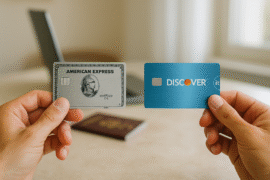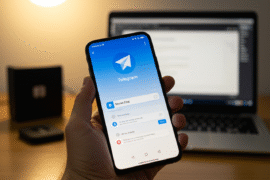This article may contain references to products or services from one or more of our advertisers or partners. We may receive compensation when you click on links to those products or services. Nonetheless, our opinions are our own.
Key Highlights
- Discover programs that provide free or low-cost laptops, enabling students to access essential learning tools.
- Explore colleges, government initiatives, and nonprofit organizations as potential sources for assistance.
- Understand varying eligibility criteria, often based on financial need or academic performance.
- Learn how to apply effectively by gathering required documents and tracking your application.
- See how free laptops close the digital divide and support academic success.
Introduction
Education can come with unexpected expenses, and buying a laptop is often a significant cost for students. Many programs exist to help provide free laptops, though not every school offers them. It’s essential to verify availability directly with your school or organization to understand their programs and requirements. Here’s a comprehensive guide to finding free laptops and ensuring you’re equipped for academic success.
Understanding the Importance of Having a Laptop for School
In today’s digital age, laptops are essential tools for students. They grant access to online learning platforms, enable research, and facilitate collaboration with classmates. Especially with the rise of virtual learning, a laptop has become a necessity for staying connected and excelling in education.
The Role of Technology in Modern Education
Technology has revolutionized education, making laptops as vital as textbooks. Many schools have integrated tech fees into tuition, recognizing the importance of digital tools. However, this shift highlights the digital divide, where students from low-income families struggle to access necessary technology.
Organizations and programs aim to address this gap by providing free or low-cost laptops to ensure equitable access to education, empowering students regardless of their economic background.
How Laptops Enhance Learning and Accessibility
Laptops open doors to a vast array of educational resources. Students can access online libraries, interactive learning platforms, and real-time class discussions. Beyond academics, laptops foster creativity and skill development in areas like coding, graphic design, and writing. They enable students to explore interests and build competencies essential for modern careers.
Preparing for Your Free Laptop Application
Before applying for a free laptop, preparation is key. Start by researching programs that align with your needs. Understand the eligibility criteria—often based on financial need, academic performance, or specific fields of study.
Essential Documentation and Eligibility Criteria
Eligibility requirements vary but typically include:
- Proof of Income: Tax returns or documentation of government assistance.
- Academic Records: Transcripts, enrollment verification, or GPA requirements.
- Financial Aid Status: Pell Grant awards or other financial aid documentation.
Some programs operate on a first-come, first-served basis, while others have specific application periods. Be sure to check deadlines and gather necessary documents ahead of time.
Setting Up Necessary Accounts and Digital Presence
Create accounts on platforms used for learning, like email, video conferencing, and educational resources. Platforms like Student Beans also offer discounts on tech for verified students. Prioritize online security by using strong passwords and avoiding phishing scams. These steps prepare you for a seamless learning experience.
A Beginner’s Guide to Applying for a Free Laptop
If you’re new to applying for free laptops, this step-by-step guide will simplify the process. Each program has unique requirements, so carefully follow their instructions to increase your chances of success.
Step 1: Identifying Eligible Programs and Offers
Research programs that provide free laptops, such as:
- Dell Scholars Program: Offers laptops and financial aid for college undergraduates.
- Local Colleges and Universities: Schools like Full Sail University may include laptops in tuition fees.
- Nonprofit Organizations: Local foundations or charities often run initiatives to support students.
Search for scholarships that cover tech costs or provide laptops as part of their awards.
Step 2: Gathering Required Documents
Compile the necessary documents, including:
- Proof of income (e.g., tax returns or government assistance verification).
- Enrollment verification or acceptance letters.
- Academic transcripts or GPA reports.
Working with your school’s financial aid office can help streamline the process.
Step 3: Completing the Application Process
Treat the application process like a formal college application. Fill out all forms carefully and accurately. If essays are required, explain how a laptop will support your education and why you need assistance. Personalize your story to stand out.
Step 4: Following Up on Your Application
After submitting your application, monitor its status. Send polite follow-up emails if you don’t receive updates within the expected timeframe. If declined, ask for feedback and explore other resources.
Maximizing the Use of Your Free Laptop
Once you receive your laptop, use it effectively to enhance your education. Familiarize yourself with its features, software, and any included resources. Customizing your laptop to match your learning needs will help you succeed.
Best Practices for Maintenance and Security
- Update Regularly: Keep your operating system and software up to date.
- Install Antivirus Software: Protect your device from malware and viruses.
- Use Safe Practices: Avoid public Wi-Fi for sensitive tasks and back up important files regularly.
Educational Resources and Software Recommendations
Leverage free or discounted tools designed for students:
- Microsoft Office Suite: Access Word, Excel, and PowerPoint for assignments.
- Adobe Creative Cloud: Ideal for creative fields like graphic design.
- Online Learning Platforms: Utilize Coursera, Khan Academy, or similar sites for additional learning resources.
Conclusion
A laptop is a vital tool for education in today’s digital landscape. Programs offering free or low-cost laptops help bridge the digital divide and empower students. By preparing your application carefully and making the most of your laptop, you can enhance your learning and achieve academic success. Start your journey today and unlock new opportunities with the right tools.
Frequently Asked Questions
How can I prove my eligibility for a free laptop program?
Provide proof of income, financial aid documentation, and enrollment verification. Each program may have specific requirements.
What should I do if my application is declined?
Request feedback and explore other programs. Many organizations can guide you to alternative resources.
Are there specific programs that offer free laptops for students?
Yes, programs like Dell Scholars and local nonprofits often provide free laptops. Research state-specific initiatives as well.
What documents do I need to apply?
Typically, you’ll need proof of identity, academic records, and financial aid status.
Is there a limit to the number of free laptops a student can receive?
Some programs limit assistance to once per student. Always check the specific program’s guidelines for details.

Reviewed and edited by Albert Fang.
See a typo or want to suggest an edit/revision to the content? Use the contact us form to provide feedback.
At FangWallet, we value editorial integrity and open collaboration in curating quality content for readers to enjoy. Much appreciated for the assist.
Did you like our article and find it insightful? We encourage sharing the article link with family and friends to benefit as well - better yet, sharing on social media. Thank you for the support! 🍉
Article Title: Free Laptops for School: How to Get Yours Today
https://fangwallet.com/2025/02/06/free-laptops-for-school/The FangWallet Promise
FangWallet is an editorially independent resource - founded on breaking down challenging financial concepts for anyone to understand since 2014. While we adhere to editorial integrity, note that this post may contain references to products from our partners.
The FangWallet promise is always to have your best interest in mind and be transparent and honest about the financial picture.
Become an Insider

Subscribe to get a free daily budget planner printable to help get your money on track!
Make passive money the right way. No spam.
Editorial Disclaimer: The editorial content on this page is not provided by any of the companies mentioned. The opinions expressed here are the author's alone.
The content of this website is for informational purposes only and does not represent investment advice, or an offer or solicitation to buy or sell any security, investment, or product. Investors are encouraged to do their own due diligence, and, if necessary, consult professional advising before making any investment decisions. Investing involves a high degree of risk, and financial losses may occur including the potential loss of principal.
Source Citation References:
+ Inspo












































